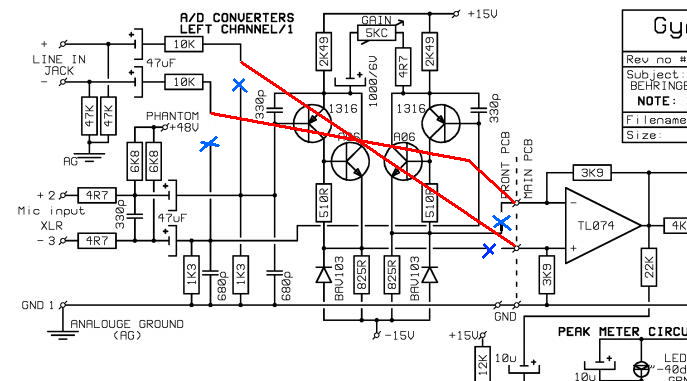[quote author="TobWen"][About RME and clock noise]
They do? I always thought, they're one of the bests?![/quote]
It's all relative.
RME's clocking made its claim to fame in the MADI arena, where their solution would bring digital streams with severe jitter (tens of ns) down to a much more manageable level (a few ns). For
their SteadyClock technology they claim ~700ps jitter, which is much better than many other prosumer devices, although not as good as some of the newer offerings by Apogee et al. Then again, a
$10 DIY word clock generator is likely to have an order of magnitude less jitter.
In the end, how much does it all matter? As the OPTOREC datasheets show, common ADAT receivers have ~1ns jitter. Most S/PDIF receivers have 100-200ps jitter, and that's without TOSLINK dispersion effects. All physically realizable wordclock-receivers will have some self noise, so even if a WC transmitter were to have zero output jitter, there will be some jitter by the time the reconstructed WC signal is applied to a PLL. Plus, as discussed before you'd never want to slave your converters to any incoming signal anyway, so that ~700ps jitter is likely 'good enough'.
[quote author="synthi"][quote author="jdbakker"]Your recording path looks fine; for playback jitter will be lower if you let the Apogee be master[/quote]
Well, The Apogee DA-16 need to be clocked because don´t have its own clock!

[/quote]
Duh, yes. I'd overlooked that, sorry.
[quote author="TobWen"]@jdbakker:
So what do you think of hooking up a CS5361 with a Tent-clock and sending the data to an OPTOGEN?[/quote]
I would use a CS5381 or a PCM4222 myself. Have a look at
this thread if you haven't already.
JDB.
[I should really find the time to get some results from
my CS5381 board and post them, even if the rest of the recorder is still waiting for parts]










